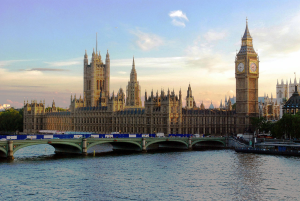 The UK Parliament has summarised the position on permitted development rights in England, and why some building works do not need planning permission from the local planning authority.
The UK Parliament has summarised the position on permitted development rights in England, and why some building works do not need planning permission from the local planning authority.
image for illustration: Parliamentary copyright images are reproduced with the permission of Parliament
Parliament UK writes:
What are permitted development rights?
Planning permission from the local planning authority is usually needed to undertake development (that is, to carry out building works and/or to ‘materially’ change how a property is used).
Permitted development rights allow individuals and developers to make certain changes to buildings or land without the need to apply for and obtain planning permission from the local planning authority. Permitted development rights are granted by Parliament and are set out in the General Permitted Development Order.
What development is covered by permitted development rights?
Schedule 2 to the General Permitted Development Order lists the types of works that are covered by permitted development rights. For example, common home improvement projects, such as extensions to homes, loft conversions and the installation of solar panels on roofs are generally covered by permitted development rights.
There are also permitted development rights which allow for buildings to be changed between the use classes. For example, a building in commercial, business or service use (such as an office or a shop) may be converted to residential use without planning permission from the local planning authority.
Further information on whether permitted development rights apply can be obtained from the local planning authority (usually, the district council). Individuals who are unsure whether their planned works are covered by permitted development rights may wish to request a lawful development certificate from the local planning authority. This is a legal document certifying that a past, present or future development is lawful.
Are there any restrictions on permitted development rights?
Most permitted development rights are subject to conditions and limitations designed to mitigate the potential impacts of the works covered. For example, fences and walls are not covered by permitted development rights if they are taller than two metres.
Works that may otherwise be covered by permitted development rights may also be restricted in certain protected areas (for example, in National Parks and World Heritage Sites).
Permitted development rights may also be restricted in conservation areas and for listed buildings. For further information, see the Library article on planning permission in conservation areas and listed buildings in England.
Restrictions on permitted development rights are out in the relevant part of the General Permitted Development Order. Works that do not meet permitted development criteria will need planning permission.
Can a local authority impose further restrictions on permitted development rights?
A local planning authority can also restrict permitted development rights in (part of) its local area using an ‘article 4 direction’. Government guidance advises LPAs to use article 4 directions in “a measured and targeted way” and to apply them to “the smallest geographical area possible”.
An article 4 direction does not mean that there is a blanket ban on development. Rather, it means that planning permission from the local planning authority is needed to carry out the development. This allows the local authority to consider the impacts of the planned works as part of a full planning application.
Do individuals need the local authority’s consent to undertake permitted development?
In general, if works are covered by permitted development rights, there is no need to apply to the local planning authority for permission to carry out the works. However, some permitted development still requires ‘prior approval’ from the local planning authority.
The prior approval process gives the local planning authority the opportunity to assess whether the planned works meet conditions set out in the General Permitted Development Order. The conditions that require prior approval depend on the type of development.
For example, the installation of solar panels on non-domestic buildings may require prior approval with regards to their design and external appearance.
When deciding a ‘prior approval’ application, a local planning authority can only consider the conditions set out in the General Permitted Development Order for that type of development. It cannot consider the principle of the development or any other matter (for example, whether the development is in line with policies in its local plan).
Works covered by permitted development rights may also require other permissions or consents, such as building regulations approval.
Are local residents consulted?
In general, there is no requirement to consult and seek the views of local residents on works covered by permitted development rights (unlike for development which requires a full planning application).
However, for some permitted development, a local planning authority will consult neighbours or local residents on certain matters as part of the prior approval process. For example, neighbours must be consulted on larger single storey rear extensions to homes. If they raise any objections, the local planning authority will decide whether the impact of the extension on the neighbouring properties is acceptable and whether the works can proceed.
Can a local authority stop permitted development or take enforcement action?
In general, if works are covered by permitted development rights, local planning authorities do not have powers to stop the works or impose conditions.
If works are not covered by permitted development or violate conditions set out in the General Permitted Development Order, and planning permission is not obtained for the works, this is considered a ‘planning breach’. A local authority has enforcement powers to respond to planning breaches. It is up to the local authority, however, whether and what enforcement action they take.

